Related Research Articles
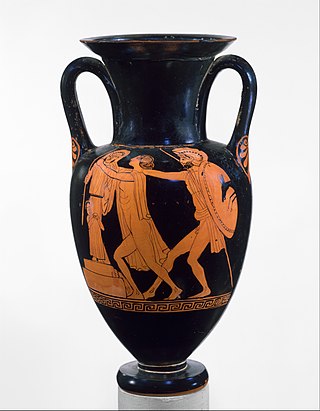
Cassandra or Kassandra in Greek mythology was a Trojan priestess dedicated to the god Apollo and fated by him to utter true prophecies but never to be believed. In modern usage her name is employed as a rhetorical device to indicate a person whose accurate prophecies, generally of impending disaster, are not believed.
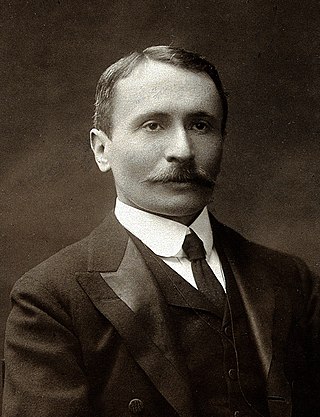
Sir Marc Aurel Stein, (Hungarian: Stein Márk Aurél; 26 November 1862 – 26 October 1943) was a Hungarian-born British archaeologist, primarily known for his explorations and archaeological discoveries in Central Asia. He was also a professor at Indian universities.

Sogdia or Sogdiana was an ancient Iranian civilization between the Amu Darya and the Syr Darya, and in present-day Uzbekistan, Turkmenistan, Tajikistan, Kazakhstan, and Kyrgyzstan. Sogdiana was also a province of the Achaemenid Empire, and listed on the Behistun Inscription of Darius the Great. Sogdiana was first conquered by Cyrus the Great, the founder of the Achaemenid Empire, and then was annexed by the Macedonian ruler Alexander the Great in 328 BC. It would continue to change hands under the Seleucid Empire, the Greco-Bactrian Kingdom, the Kushan Empire, the Sasanian Empire, the Hephthalite Empire, the Western Turkic Khaganate and the Muslim conquest of Transoxiana.

Xanthippe was an ancient Athenian, the wife of Socrates and mother of their three sons: Lamprocles, Sophroniscus, and Menexenus. She was likely much younger than Socrates, perhaps by as much as 40 years. In Xenophon's Symposium, she is described by Antisthenes as "the most difficult, harshest, painful, ill-tempered" wife; this characterisation of Xanthippe has influenced all subsequent portrayals of her.

Dunhuang is a county-level city in northwestern Gansu Province, Western China. According to the 2010 Chinese census, the city has a population of 186,027, though 2019 estimates put the city's population at about 191,800. Sachu (Dunhuang) was a major stop on the ancient Silk Road and is best known for the nearby Mogao Caves.
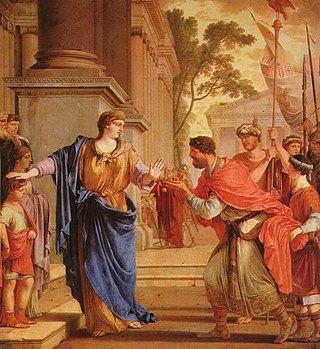
Cornelia was the second daughter of Publius Cornelius Scipio Africanus, a Roman general prominent in the Second Punic War, and Aemilia Paulla. Although drawing similarities to prototypical examples of virtuous Roman women, such as Lucretia, Cornelia puts herself apart from the rest because of her interest in literature, writing, and her investment in the political careers of her sons. She was the mother of the Gracchi brothers, and the mother-in-law of Scipio Aemilianus.
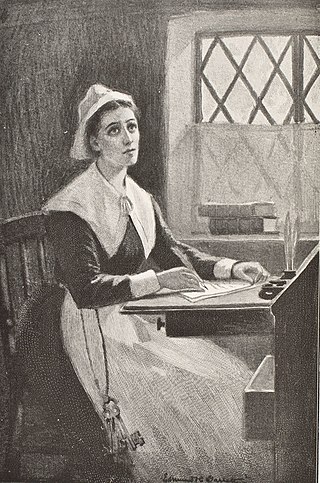
Anne Bradstreet was among the most prominent of early English poets of North America and first writer in England's North American colonies to be published. She is the first Puritan figure in American Literature and notable for her large corpus of poetry, as well as personal writings published posthumously.
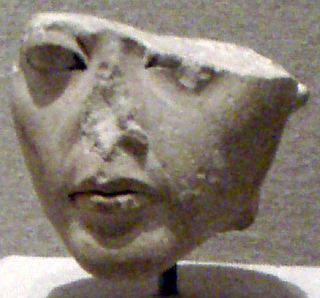
Ankhesenamun was a queen who lived during the 18th Dynasty of Egypt. Born Ankhesenpaaten, she was the third of six known daughters of the Egyptian Pharaoh Akhenaten and his Great Royal Wife Nefertiti. She became the Great Royal Wife of Tutankhamun. The change in her name reflects the changes in ancient Egyptian religion during her lifetime after her father's death. Her youth is well documented in the ancient reliefs and paintings of the reign of her parents.

Elizabeth Seymour was a younger daughter of Sir John Seymour of Wulfhall, Wiltshire and Margery Wentworth. Elizabeth and her sister Jane served in the household of Anne Boleyn, the second wife of Henry VIII. The Seymours rose to prominence after the king's attention turned to Jane. In May 1536, Anne Boleyn was accused of treason and adultery, and subsequently executed. On 30 May 1536, eleven days after Anne's execution, Henry VIII and Jane were married. Elizabeth was not included in her sister's household during her brief reign, although she would serve two of Henry VIII's later wives, Anne of Cleves and Catherine Howard. Jane died 24 October 1537, twelve days after giving birth to a healthy son, Edward VI.

MadameElizabeth Charlotte, Duchess of Orléans, also known as Liselotte von der Pfalz, was a German member of the House of Wittelsbach who married into the French royal family. She was the second wife of Monsieur Philippe I, Duke of Orléans. By Philippe, Liselotte was the mother of Philippe II, Duke of Orléans, and Élisabeth Charlotte, Duchess of Lorraine. Philippe II was France's ruler during the Regency. Liselotte gained literary and historical importance primarily through preservation of her correspondence, which is of great cultural and historical value due to her sometimes very blunt descriptions of French court life and is today one of the best-known German-language texts of the Baroque period.
The Sogdian language was an Eastern Iranian language spoken mainly in the Central Asian region of Sogdia, located in modern-day Uzbekistan, Tajikistan, Kazakhstan and Kyrgyzstan; it was also spoken by some Sogdian immigrant communities in ancient China. Sogdian is one of the most important Middle Iranian languages, along with Bactrian, Khotanese Saka, Middle Persian, and Parthian. It possesses a large literary corpus.

Marcella (325–410) is a saint in the Roman Catholic Church and Orthodox Church. She was a Christian ascetic in the Byzantine Era.

Maria Constanze Cäcilia Josepha Johanna Aloysia Mozart was a German soprano, later a businesswoman. She is best remembered as the spouse of the composer Wolfgang Amadeus Mozart, who from the evidence of his letters was deeply in love with her throughout their nine-year marriage. Following her husband's sudden death in 1791, Constanze Mozart escaped poverty and supported her family through concertizing and promotion of her husband's memory; she was responsible in part for the extensive posthumous publication of her husband's works. She is also regarded, less positively, as a source of mythology concerning her husband's life, deriving in part from the biography she jointly wrote with her second husband, Georg Nikolaus von Nissen.
Pirissi and Tulubri are a pair of messengers of the 1350–1335 BC Amarna letters correspondence. Pirissi and Tulubri are the messengers of King Tushratta of Mitanni, and are referenced in Amarna letters EA 27, 28, and EA 29,.

Nana was an ancient Eastern Iranian goddess worshiped by Bactrians, Sogdians and Chorasmians, as well as by non-Iranian Yuezhi, including Kushans, as the head of their respective pantheons. She was derived from the earlier Mesopotamian goddess Nanaya. Attempts to connect her with Inanna (Ishtar) instead depend on the erroneous notion that the latter was identical with Nanaya, which is considered outdated. She was regarded as an astral deity, and in Sogdian art was depicted representations of the sun and the moon. Kushan emperors additionally associated her with royal power. In Sogdia she might have also developed an otherwise unattested warlike aspect, as evidenced by murals showing her in battles against demons. She was seemingly associated with the Sogdian counterpart of Tishtrya, Tish, who might have been regarded as her spouse.
The Indians in China are migrants from India to China and their descendants. In modern times, there is a large long-standing community of Indians living in Hong Kong, often for descendants with several generations of roots and a growing population of students, traders and employees in mainland China. Only 550 Indians have citizenship in China. The majority of Indians are East Indian Bengali, Bihari as well as a high proportion of North Indians.

Chinese–Iranian relations refer to the economic, political, and social relations between the People's Republic of China and the Islamic Republic of Iran. Official diplomatic relations were first established in 1937. The two civilizations had a history of cultural, political and economic exchanges along the Silk Road since at least 200 BCE and possibly earlier. They have developed a friendly, economic and strategic relationship.

The Guiyi Circuit, also known as the Guiyi Army, Golden Mountain Kingdom of Western Han, and Dunhuang Kingdom of Western Han, was a Chinese regional military command and later an autonomous dynastic regime nominally subordinate to the Tang dynasty, the Five Dynasties, and the Northern Song dynasty. The Guiyi Circuit was controlled by the Zhang family from the second half of the 9th century to the 10th century and then the Cao family until the 11th century. The Guiyi Circuit was headquartered in Shazhou.
The Amarna letter EA1 is part of an archive of clay tablets containing the diplomatic correspondence between Egypt and other Near Eastern rulers during the reign of Pharaoh Akhenaten, his predecessor Amenhotep III and his successors. These tablets were discovered in el-Amarna and are therefore known as the Amarna letters. All of the tablets are inscribed with cuneiform writing.
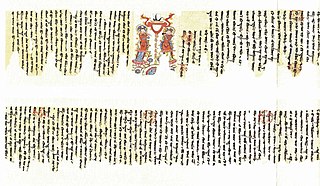
The Sogdian-language Manichaean letter is a Sogdian letter written by Shahryâr Zâdag to Mu Wei of the Eastern Diocese, found in Xinjiang Baziklik Thousand-Buddha Caves, selected National Precious Ancient Books. Now in the collection of Turpan Museum, number "81 TB 65:01".
References
- 1 2 "A fourth century Abandoned Wife". idp.bl.uk. Retrieved 2019-08-03.
- 1 2 "Sogdian Ancient Letters". depts.washington.edu. Retrieved 2019-08-03.
- ↑ Livshits, Vladimir (2008). "The Sogdian "Ancient Letters" (I, III)". Iran & the Caucasus. 12 (2): 289–293. doi:10.1163/157338408X406065. ISSN 1609-8498. JSTOR 25597375.
- ↑ "Ancient Letters | The Sogdians". sogdians.si.edu. Retrieved 2019-08-03.